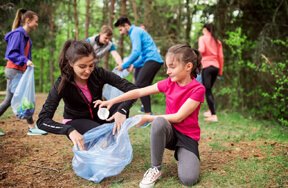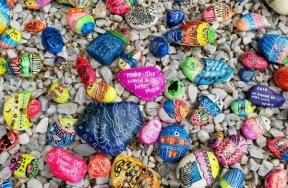Floating in the waters of the North Pacific Ocean is one lasting human legacy we can’t be proud of at all – a giant floating island of garbage.
It’s known as the Great Pacific Garbage Patch, the Eastern Garbage Patch and the Pacific Trash Vortex. But no matter what you call it, it’s pretty disgusting.
The floating island of rubbish is a collection of marine litter in the central North Pacific estimated to be about the twice the size of the state of Texas. It’s mainly composed of plastic and other debris that have been trapped by the current of the North Pacific Gyre.
It’s huge but – so far – it’s not visible from space.
Basically, the garbage patch has formed over time as a result of ocean currents moving waste to one location. Once the garbage gets to the central North Pacific location, it doesn’t really move much (that’s the way the ocean currents work).
Some Stats
- Twice the size of the state of Texas
- Covers an area between 700,000 square kilometers to more than 15,000,000 square kilometers – 0.41% of the total size of the Pacific Ocean
- Contains over 100,000,000 tons of debris
- 80% of the garbage comes from land
- 20% of the garbage comes from ships at sea
- It takes about 5 years for currents to carry a piece of garbage from North America to the spot
- It takes about 1 year for currents to carry a piece of garbage from Asia to the spot
Impact On Environment
Even though we always talk about how plastic doesn’t disintegrate in landfills, it does break down into smaller and smaller pieces when it’s floating in the ocean. However, it only breaks down in size, not content – so once plastic, always plastic.
Once the plastic pieces become small enough they can be mistaken for zooplankton and actually be ingested or eaten by aquatic organisms – which means they can enter the food chain and may end up back on your dinner plate.
Whether they ingest the tiny pieces of plastic directly or by eating another animal that has previously ingested the plastic, there are several kinds of creatures that are affected: jellyfish, sea turtles, albatross, etc.
The floating debris can also absorb organic pollutants from the seawater, which makes them even more harmful to wildlife that may ingest them.
Cleanup
In 2008, Richard Owen, a building contractor and scuba dive instructor, formed the Environmental Cleanup Coalition to address the issue of the pollution of the North Pacific. The ECC plan calls for modifying a fleet of ships to clear the area of debris and form a restoration and recycling laboratory called Gyre Island.































